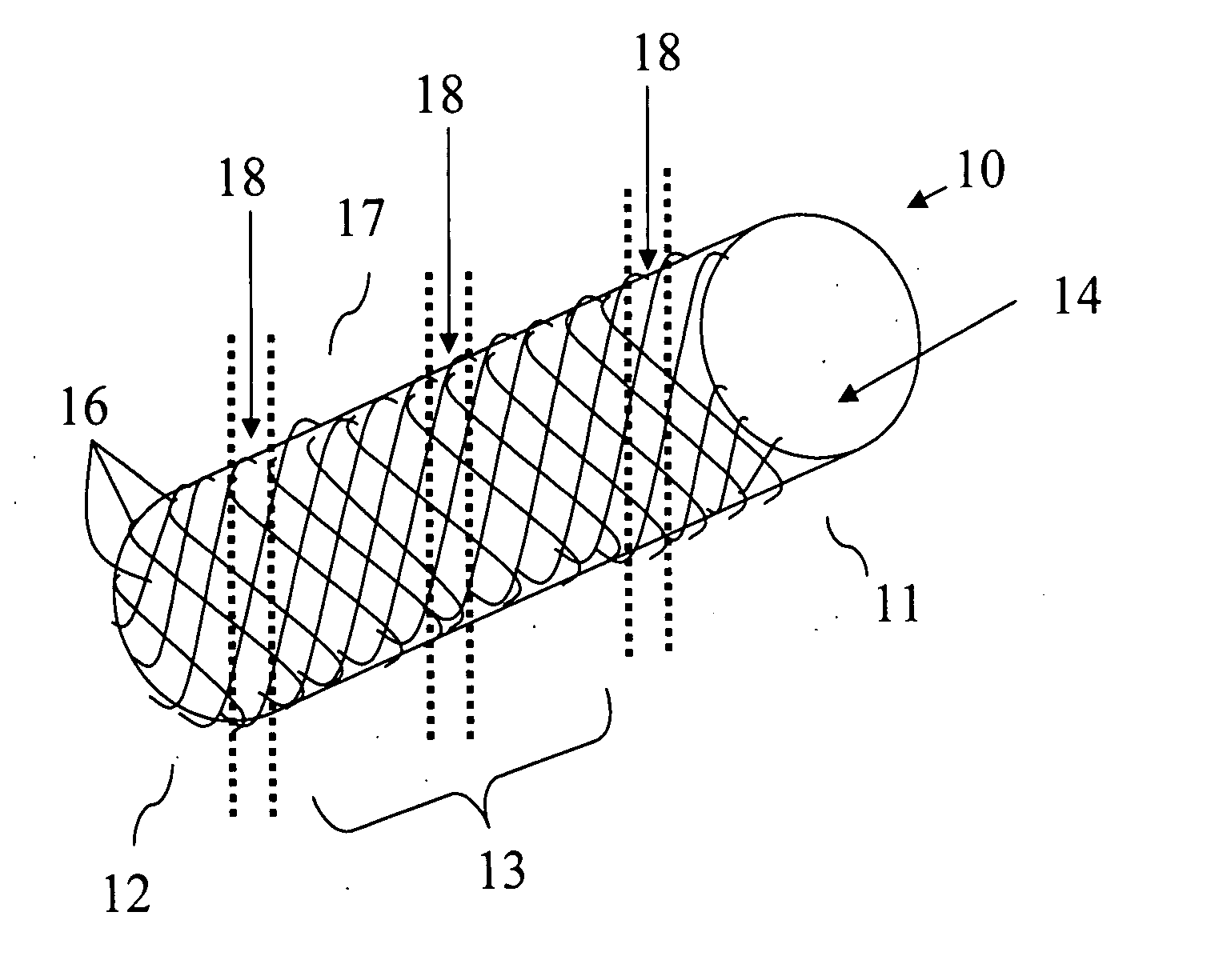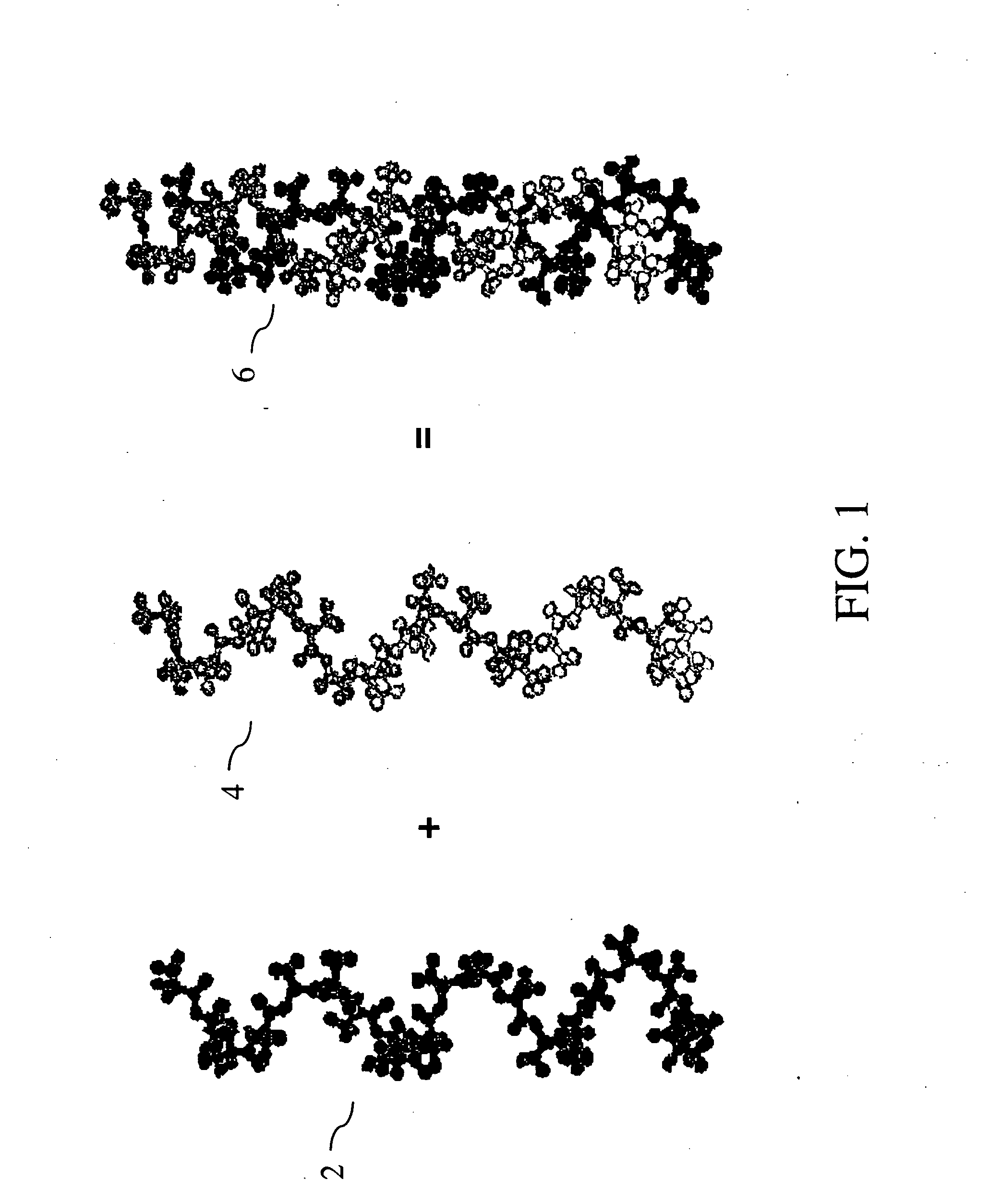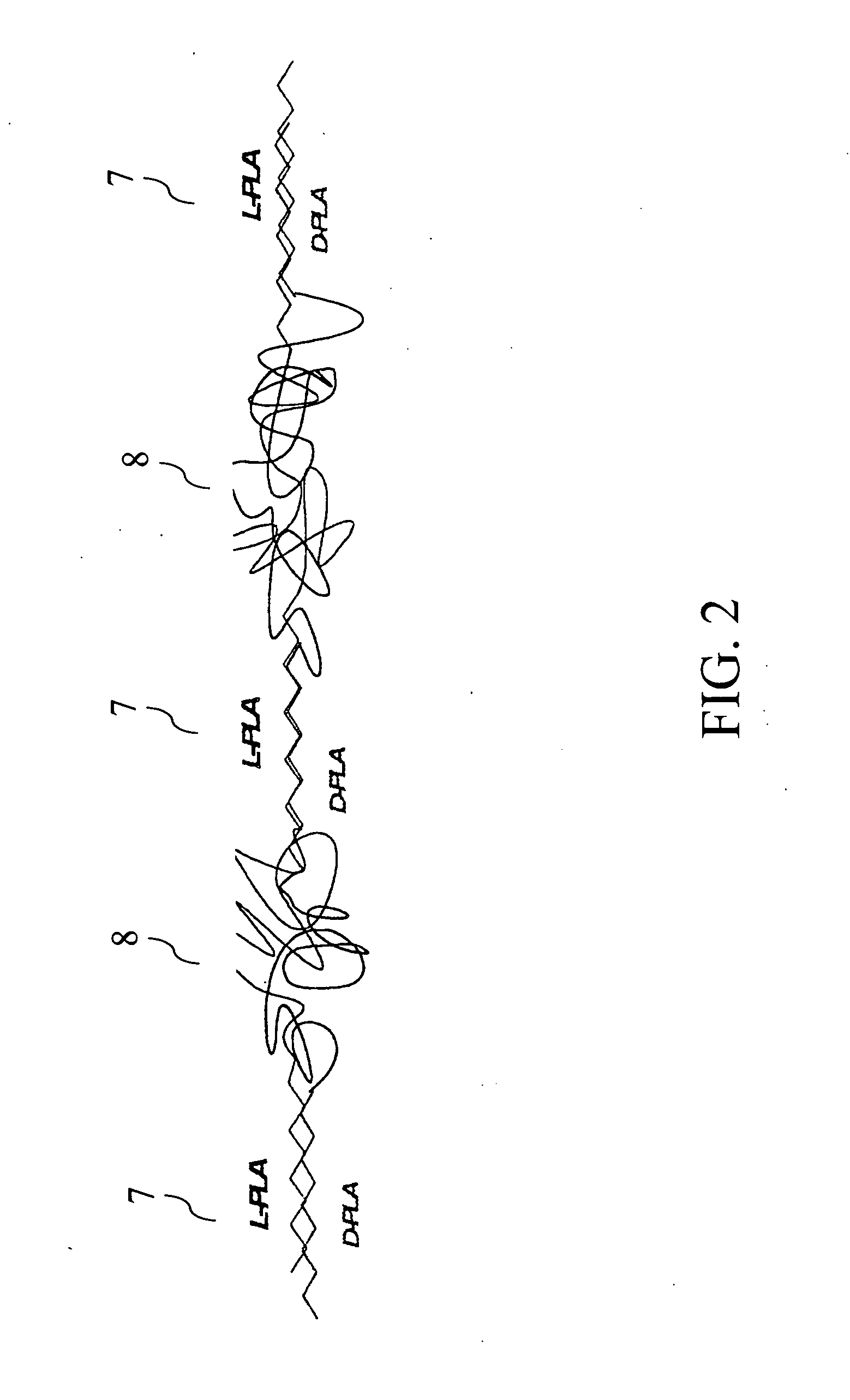Biodegradable endovascular stent using stereocomplexation of polymers
a polymer and endovascular technology, applied in the field of biodegradable endovascular stents, can solve the problems of increasing the damage of the vessel and subsequent neointimal formation, the ptca plagues interventional cardiologists, and the stent restenosis has become an even more formidable opponent for interventional cardiologists
- Summary
- Abstract
- Description
- Claims
- Application Information
AI Technical Summary
Benefits of technology
Problems solved by technology
Method used
Image
Examples
embodiment 1
EXAMPLE 1
Synthesis of PLA Block-Copolymers
[0060] An example of synthesis of polymer structures follows: Homopolymers of PLA are synthesized by dissolving D-lactide or L-lactide in dry toluene at 100° C. and adding a solution of stannous octoate and alcohol as a polymerization catalyst (5% solution in toluene, 0.1 to 3 mole % per lactide). After 3 hours the solvent is evaporated to dryness and the viscous residue is left at 130° C. for an additional 2 hours to yield the polymer. When lactide block copolymers are prepared, the first block, i.e. L-lactide, is prepared in toluene at 100° C. and a second portion of lactide, i.e. D-lactide, is added and polymerization is continued for an additional 2 hours. Following these steps, a third portion of lactide is added and the polymerization is continued. Block copolymers with cyclic hydroxy alkyl acids and cyclic carbonates are prepared in a similar manner, but the second portion is the desired cyclic monomer (caprolactone, trimethylene ca...
example 2
Synthesis of 50:50 wt. % Polylactide / Polycaprolactone
[0065] A 250 ml glass flask is charged with 10 g (5.0 mmole) of polycaprolactone diol (PCAP) (Mn=2000), 10 g (69.44 mmole) of L-lactide and dried by azeotrope with 150 ml of Toluene. Toluene is evaporated and the system is stirred for one hour at 150° C. to cause initiation with PCAP diol. Next, 0.35 ml of 0.1M solution of Tin 2-ethylhexanoate (Sn(Oct)2) in toluene (monomer / catalyst=2000 / 1) is added. After an additional 2 hours at 150° C. the flask is cooled, and the product polymer is dissolved in a minimal quantity of dichloromethane and precipitated from the mixture of diisopropyl ether:petroleum ether 9:1. The number average molecular weight (Mn) of the related product is about 4000 Da.
[0066] Hydroxyl or amino terminated macroinitiators may be used instead of PCAP.
[0067] Stereocomplex preparation from those triblock copolymers is carried out according to one of the methods specified above.
[0068] Characterization of the cop...
example 3
Preparation of Star-Like PLA
[0069] Preparation of start-like enantiomeric PLA (D-PLA)4(DL-PLA)4-pentaerithritole is done in one embodiment as follows. A 250 ml round bottom flask is charged with 0.14 gr (0.001 mol) Pentaerythritol (PRT) and 4.32 gr DL-Lactide, and dried by azeotrope with Toluene. After this process, a portion of the Toluene is evaporated and the system is cooled to 120° C. Next, the solution is stirred for a ½ hour at this temperature to cause initiation with the PRT. Next, Sn(Oct)2 (monomer / catalyst=2000 / 1) is added, and the reaction is heated to 150° C. and stirred for 2 hours. The reaction is followed with the addition of 4.32 grams of former dried D-Lactide and an additional quantity of Sn(Oct) (additional monomer / catalyst=2000 / 1). The reaction proceeds for more than 2 hours. The final polymer is a white bulky material having a number average molecular weight of 9400. There are 2 possible ways to prepare stereocomplex gels from this kind of polymers: [0070] i. ...
PUM
| Property | Measurement | Unit |
|---|---|---|
| thickness | aaaaa | aaaaa |
| thickness | aaaaa | aaaaa |
| temperature | aaaaa | aaaaa |
Abstract
Description
Claims
Application Information
 Login to View More
Login to View More - R&D
- Intellectual Property
- Life Sciences
- Materials
- Tech Scout
- Unparalleled Data Quality
- Higher Quality Content
- 60% Fewer Hallucinations
Browse by: Latest US Patents, China's latest patents, Technical Efficacy Thesaurus, Application Domain, Technology Topic, Popular Technical Reports.
© 2025 PatSnap. All rights reserved.Legal|Privacy policy|Modern Slavery Act Transparency Statement|Sitemap|About US| Contact US: help@patsnap.com



